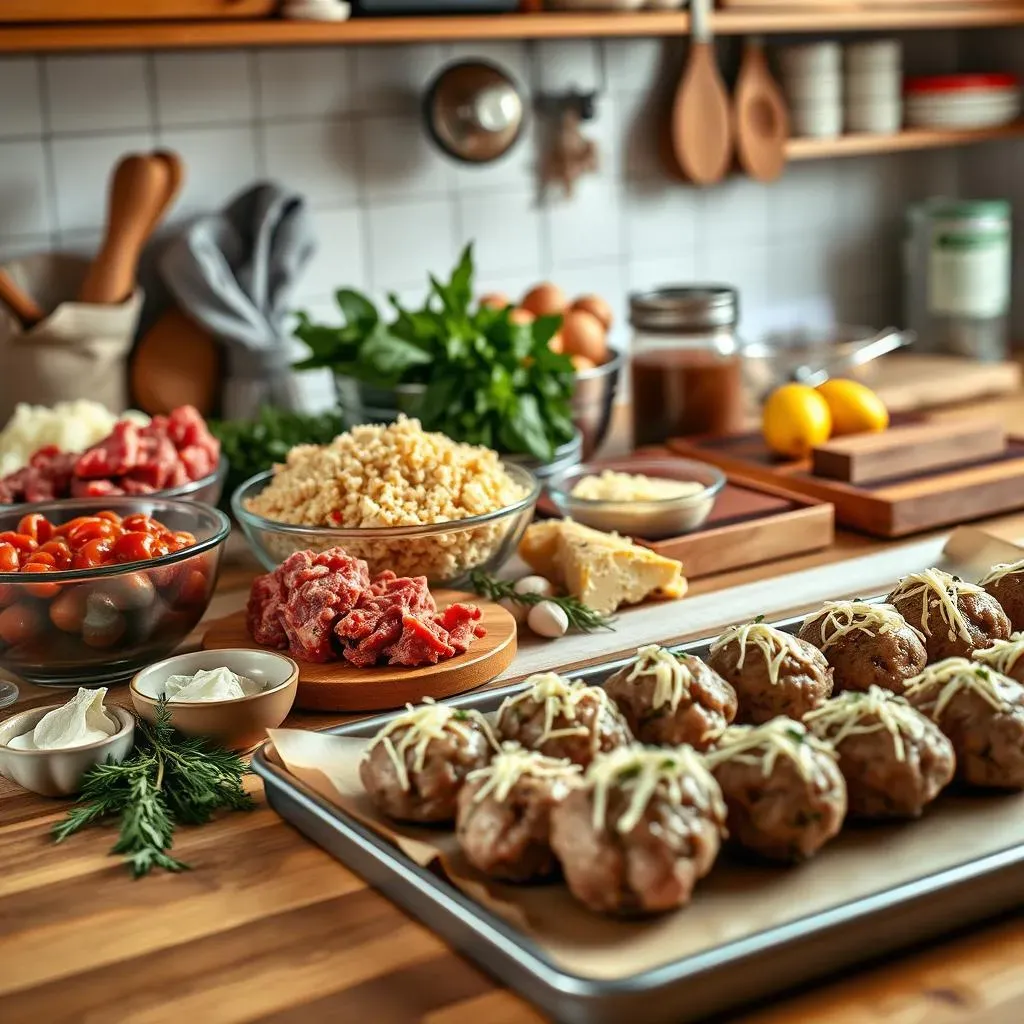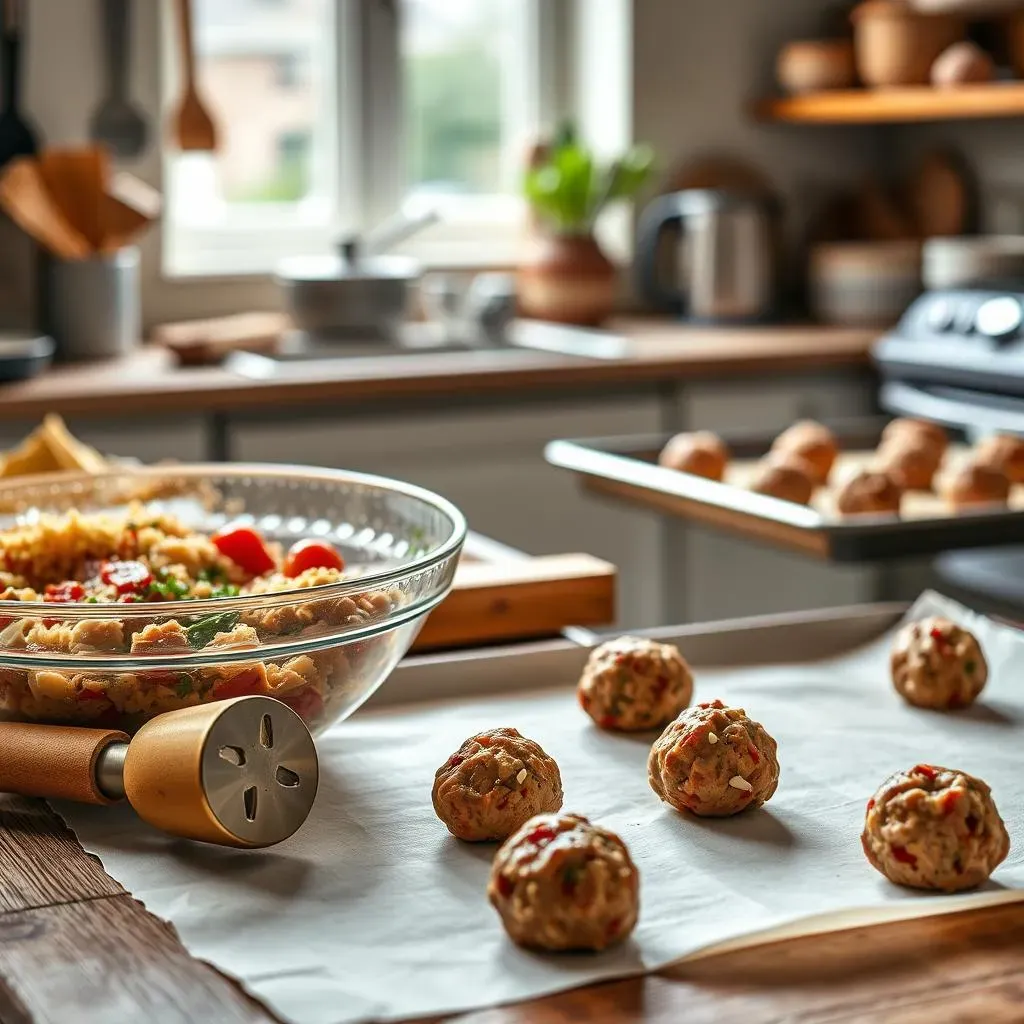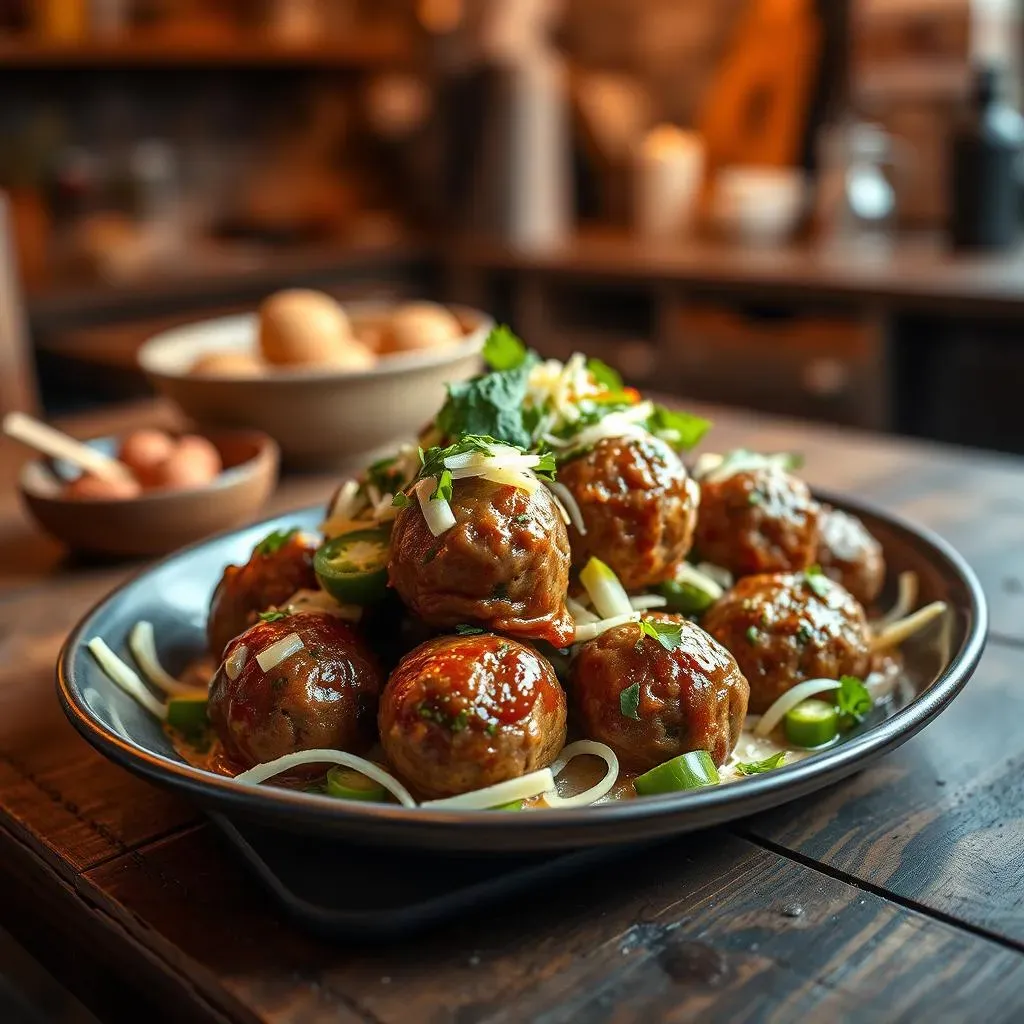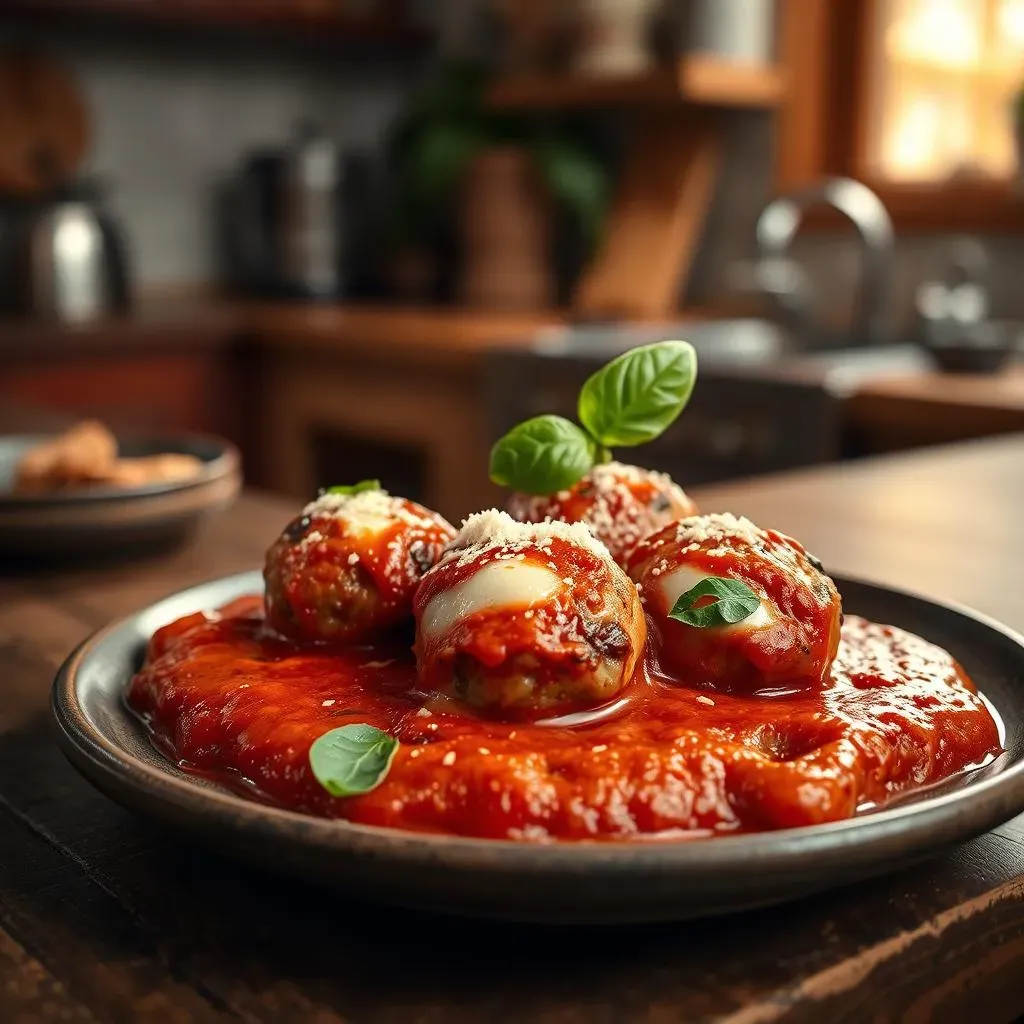Craving that classic comfort food? Look no further! This article is your ultimate guide to creating the most delicious homemade meatballs you've ever tasted. Forget bland, store-bought versions; we're diving headfirst into a world of juicy, flavorful perfection, crafted right in your own kitchen. We'll walk you through each step, from selecting the perfect blend of ingredients to mastering the art of achieving that melt-in-your-mouth tenderness. Whether you're a seasoned chef or a kitchen newbie, our easy-to-follow instructions will have you whipping up a batch of these savory delights in no time. Prepare to discover the secrets behind truly exceptional homemade meatballs, and get ready to impress your family and friends with a dish that's bursting with flavor and love. We'll also explore fun variations, serving suggestions, and even tips for freezing and reheating, so you can enjoy these delectable morsels whenever the craving strikes. So, roll up your sleeves, and let's get cooking!
Ingredients for Perfect Homemade Meatballs

Ingredients for Perfect Homemade Meatballs
The Meat: Choosing Your Protein
Let's talk meat, because that's the heart and soul of any great meatball. The classic combo is a blend of ground beef and pork, and honestly, it's hard to beat. The beef gives you that rich, meaty flavor, while the pork adds moisture and tenderness. I usually go for an 80/20 blend of ground beef (that's 80% lean, 20% fat) and a ground pork that isn't too lean. But hey, don't be afraid to experiment! Ground veal is another fantastic option for extra tenderness, or you could even throw in some ground lamb for a more robust, earthy flavor. Just remember, fat is your friend here – it keeps the meatballs from drying out.
Now, if you're feeling adventurous, try mixing in some Italian sausage (removed from its casing, of course). The spices in the sausage will add a serious flavor punch! For a leaner option, ground turkey or chicken can work, but you'll need to be extra careful not to overcook them, as they tend to dry out more easily. Consider adding a bit of olive oil or an extra egg to help bind and moisturize.
Binders and Breadcrumbs: Holding It All Together
Next up, let's talk binders. These are the ingredients that hold everything together and give your meatballs that perfect, slightly springy texture. Breadcrumbs are the classic choice, and for good reason. They absorb moisture and help the meatballs keep their shape. I prefer using Italian-style breadcrumbs, which are already seasoned with herbs and spices, but plain breadcrumbs work just as well. If you're using plain breadcrumbs, be sure to add some extra seasonings to compensate.
But here's a little secret: soaking your breadcrumbs in milk or broth before adding them to the meat mixture will make your meatballs even more tender. Trust me on this one! Just pour a little milk or broth over the breadcrumbs and let them sit for a few minutes until they're nice and soggy. Then, gently squeeze out any excess liquid before adding them to the bowl. Eggs are another essential binder, providing structure and richness. One or two eggs per pound of meat is usually sufficient.
Seasoning Sensations: Flavor is Key
now for the fun part: seasoning! This is where you can really let your creativity shine. Of course, you'll need the basics: salt, pepper, garlic powder, and onion powder. But don't stop there! Dried Italian herbs like oregano, basil, and thyme are a must for that authentic Italian flavor. A pinch of red pepper flakes will add a touch of heat, if you're into that sort of thing.
Fresh herbs are always a welcome addition, too. Chopped parsley, basil, or oregano will add a burst of fresh flavor. And don't forget the garlic! Minced garlic is a game-changer. I like to sauté it in a little olive oil before adding it to the meat mixture, to mellow out the flavor and release its aroma. A touch of grated Parmesan cheese can also add a salty, savory note. And if you really want to take things to the next level, try adding a splash of Worcestershire sauce or a dash of balsamic vinegar for extra depth of flavor.
Ingredient | Purpose | Notes |
|---|---|---|
Ground Beef & Pork | Main flavor & texture | 80/20 blend recommended |
Italian Breadcrumbs | Binder | Soak in milk for extra tenderness |
Eggs | Binder & richness | 1-2 eggs per pound of meat |
Garlic, Herbs, Spices | Flavor | Experiment with your favorites! |
StepbyStep Guide to Making Homemade Meatballs

StepbyStep Guide to Making Homemade Meatballs
Mixing Like a Pro: Getting the Right Consistency
Alright, now that you've got all your ingredients prepped, it's time to get your hands dirty! Gently combine all the ingredients in a large bowl. And I mean gently! Overmixing is the enemy of tender meatballs. Use your hands (they're the best tools for the job) to just barely combine everything until it's evenly distributed. You're looking for a mixture that's moist but not wet, and that holds together without being too dense. If the mixture seems too dry, add a splash of milk or broth. If it seems too wet, add a little more breadcrumbs.
Here's a pro tip: before you start rolling, take a small spoonful of the mixture and cook it up in a pan to taste-test the seasoning. This is your chance to adjust the flavors before you commit to making the whole batch. Need more salt? Add it! Want a little more garlic? Go for it! This is your meatball masterpiece, so make it your own.
Rolling and Cooking: Achieving Meatball Perfection
Once you're happy with the flavor, it's time to roll those babies! I like to use a cookie scoop to ensure that all my meatballs are the same size, but you can also just use your hands. Aim for about 1-1.5 inches in diameter. As you roll, try to keep the meatballs light and airy, not too tightly packed. Place the rolled meatballs on a baking sheet lined with parchment paper. Now, you've got a couple of options for cooking: baking or pan-frying. Baking is the easier, less messy option. Simply bake the meatballs in a preheated oven at 375°F (190°C) for about 20-25 minutes, or until they're cooked through and lightly browned.
If you prefer pan-frying, heat some olive oil in a large skillet over medium heat. Add the meatballs and cook, turning occasionally, until they're browned on all sides and cooked through. This will take about 10-15 minutes. Pan-frying gives you a nice, crispy exterior, but it does require a bit more attention. No matter which method you choose, make sure the meatballs are cooked to an internal temperature of 160°F (71°C) to ensure they're safe to eat. And that's it! You've just made a batch of delicious, homemade meatballs.
Step | Description | Tips |
|---|---|---|
Mixing | Gently combine ingredients | Don't overmix! Taste-test seasoning. |
Rolling | Shape into 1-1.5 inch balls | Keep them light and airy. |
Cooking | Bake or pan-fry | Ensure internal temp of 160°F (71°C). |
Variations and Substitutions for Your Meatball Recipe

Variations and Substitutions for Your Meatball Recipe
Spice It Up: Adding a Kick to Your Meatballs
so you've mastered the basic meatball. Now it's time to get a little crazy! One of my favorite things about meatballs is how versatile they are. You can easily adapt the recipe to suit your own tastes and preferences. If you're a fan of spicy food, try adding some chopped jalapeños or a pinch of cayenne pepper to the meat mixture. Or, for a more subtle heat, use a spicy Italian sausage instead of regular sausage. Another great way to add flavor is with different types of cheese. A little bit of grated Parmesan or Romano cheese is always a good choice, but you could also try adding some crumbled feta or goat cheese for a tangy twist.
And don't forget about veggies! Finely chopped onions, carrots, or celery can add moisture, flavor, and texture to your meatballs. Just make sure to sauté them before adding them to the meat mixture, to soften them up and release their flavor. You could also try adding some chopped spinach or kale for a boost of nutrients. The possibilities are endless!
Dietary Swaps: Meatballs for Everyone
Got dietary restrictions? No problem! It's super easy to adapt this meatball recipe to be gluten-free, dairy-free, or even vegetarian. For gluten-free meatballs, simply substitute gluten-free breadcrumbs for regular breadcrumbs. You can find gluten-free breadcrumbs at most grocery stores, or you can even make your own by toasting gluten-free bread and grinding it into crumbs. For dairy-free meatballs, just skip the Parmesan cheese or use a dairy-free Parmesan substitute. And if you're looking for a vegetarian option, try using a combination of lentils, mushrooms, and walnuts as the base for your meatballs. There are tons of vegetarian meatball recipes online, so just do a little searching and find one that sounds good to you. You can also substitute egg replacer instead of eggs to make it vegan.
Another great substitution is using ground chicken or turkey instead of beef or pork. This will make your meatballs leaner and lower in fat. Just be sure to add a little extra moisture to the mixture, as chicken and turkey tend to be drier than beef and pork. A tablespoon or two of olive oil or broth should do the trick.
Variation | Substitution | Notes |
|---|---|---|
Spicy | Jalapeños, cayenne pepper | Adjust to your spice preference |
Gluten-Free | Gluten-free breadcrumbs | Easy swap, widely available |
Vegetarian | Lentils, mushrooms, walnuts | Plenty of recipes online |
Serving and Storing Your Delicious Homemade Meatballs

Serving and Storing Your Delicious Homemade Meatballs
Serving Suggestions: Beyond Spaghetti
so you've got a batch of beautiful homemade meatballs, and now you're wondering what to do with them. Spaghetti and meatballs is the obvious choice, of course, and it's always a crowd-pleaser. But don't limit yourself! Meatballs are incredibly versatile and can be used in so many different ways. Try serving them in a meatball sub with marinara sauce and melted mozzarella cheese. Or, add them to a hearty vegetable soup for extra protein and flavor. They're also delicious served over creamy polenta or mashed potatoes. And if you're looking for a fun appetizer, try skewering them with cherry tomatoes and basil leaves for a mini meatball kebab.
Another great way to use homemade meatballs is in a casserole. Layer them with pasta, sauce, and cheese, and bake until bubbly and golden brown. This is a perfect dish for potlucks or family gatherings. You can also use them to make meatball sliders, which are always a hit at parties. Just serve them on small buns with your favorite toppings. And if you're feeling really adventurous, try adding them to a pizza! Trust me, meatball pizza is a game-changer.
Freezing for Future Feasts: Make-Ahead Magic
One of the best things about homemade meatballs is that they freeze beautifully. This means you can make a big batch and have them on hand for quick and easy meals whenever you need them. To freeze meatballs, first let them cool completely. Then, place them in a single layer on a baking sheet lined with parchment paper and freeze for about 1-2 hours, or until they're solid. This will prevent them from sticking together when you transfer them to a freezer bag. Once the meatballs are frozen solid, transfer them to a freezer bag or airtight container and store them in the freezer for up to 3-4 months.
When you're ready to use the frozen meatballs, you can either thaw them in the refrigerator overnight or cook them directly from frozen. If you're cooking them from frozen, you may need to add a few extra minutes to the cooking time. You can reheat them in the oven, in a skillet, or in a sauce. Just make sure they're heated through before serving. Frozen meatballs are perfect for adding to pasta sauces, soups, or casseroles. They're also great for making quick and easy meatball subs or sliders.
Serving Idea | Description |
|---|---|
Meatball Subs | Toasted buns, marinara, mozzarella |
Meatball Pizza | Add to your favorite pizza recipe |
Meatball Casserole | Layer with pasta, sauce, cheese |
Meatball Soup | Add to hearty vegetable soup |
Reheating Like a Pro: Maintaining Quality
Reheating homemade meatballs properly is key to maintaining their flavor and texture. The best method depends on how you plan to serve them. If you're adding them to a sauce, simply drop the meatballs into the simmering sauce and let them heat through for about 15-20 minutes. This will allow them to absorb the flavors of the sauce and become even more delicious. If you're serving them as a main course, you can reheat them in the oven. Place the meatballs on a baking sheet and bake at 350°F (175°C) for about 10-15 minutes, or until they're heated through.
You can also reheat meatballs in a skillet. Heat a little olive oil in a skillet over medium heat, add the meatballs, and cook, turning occasionally, until they're heated through. This method is great for getting a slightly crispy exterior. Avoid microwaving meatballs if possible, as this can make them dry and rubbery. If you must use a microwave, add a little water or sauce to the dish to help keep them moist. And there you have it! Everything you need to know about serving and storing your delicious homemade meatballs. Now go forth and create some culinary magic!
Conclusion
So there you have it – your complete guide to crafting the perfect homemade meatballs! From selecting the freshest ingredients to mastering the cooking process, you're now equipped to create a dish that will impress every time. Whether you stick to the classic recipe or experiment with exciting variations, remember that the key to truly exceptional meatballs lies in quality ingredients and a touch of love. Now, go forth and conquer your kitchen, and enjoy the delicious rewards of your newfound meatball mastery!